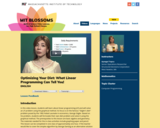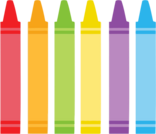
Lesson introduces distress and eustress, explains the causes of stress, and offers ways to manage stress.
- Subject:
- Health Education
- Material Type:
- Lesson
- Author:
- Utah Lesson Plans
- Date Added:
- 01/11/2022

Lesson introduces distress and eustress, explains the causes of stress, and offers ways to manage stress.

This lesson will help students understand the role of advertising, specifically the role it plays in alcohol, tobacco and medicinal drug advertisements.

At the conclusion of this lesson, students will understand the continuum of mental health and recognize the warning signs of mental health problems.

In this lesson students will be creating a blog of meals that they have prepared and cooked at home. This will be done after the student have learned about the basic nutrients and how much they need in a day. This will be a month long project in which the students choose one meal a week to post about.All meals will need to be under a certain amount of calories and with the proper proportions of fat, protein and carbohydrates.This will create better retention of what we have learned in class because they will have created something from scratch and post about it in a fun and creative way. It will also give me an easy way to grade what hey have done at home as they will be submitting the link to me for grading.

This lesson shows how to use GPS and mapping skills to make exercise areas in your community. These can include walking, riding, and biking trails.

The students will write a video narrative with how they can be safe doing certain activities and every day things.

Students will learn to identify "natural high" activities and their benefits as healthy alternatives to substance use.

Students will use Nearbpod on an individual iPad to examine various mental illnesses, explain how they effect society, identify symptoms, treatment options, and analyze the importance of early intervention and treatment. (Discussion questions, video clips, and polls will be utilized).

The activities in this lesson will help students understand why tobacco is addictive and how and why people quit using tobacco.

Students will be assessed on their understanding of how to read and understand nutrient information on food labels. 25 different food labels will be placed around the room. Students will work individually to answer the questions on their bingo cards by using the food labels. For example one question on the bingo card might say which food has the most saturated fat or grams of sugar?

Students will learn about the 6 basic nutrients. They will then learn how to keep track of there food intake using a food tracker app on the ipad. Through this information they will be able to analyze their diet and make corrections where necessary.

This is an interdisciplinary unit for Grade 3 on Nutrition. This lesson will help students better understand the benefits of eating nutritiously and ways they can eat healthier. Students will record their daily food intake and create a bar graph. We will discuss the consequences of poor nutrition in various cultures of the world. Students will learn various nutritional terms.

By understanding how nutrition effects physical and mental wellness, and through tracing the history of the United States through the Oregon Trail which led to western expansion, students have an opportunity to understand the physical and mental difficulties faced by those who traveled along the Oregon Trail, and relate how following the Dietary Guidelines for Americans may impact the health of individuals as well as communities.

Students will analyze their food and physical activity habits by keeping a food and exercise diary for three days. They will create a personal nutrition and activity plan and follow it for 3 days and report on their success.

The objectives of this lesson are to recognize and appreciate qualities and attributes that make each person "one of a kind," and identify positive personal qualities and attributes in self and others.

Students are introduced to issues regarding Internet safety by doing a dramatization where students act out a scenario about a girl who puts herself at risk on the Internet. A discussion follows where students learn how and why it is critical to understand how destructive the Internet can be. Practical protective measures will be explained.

In this video lesson, students will learn about linear programming (LP) and will solve an LP problem using the graphical method. Its focus is on the famous "Stigler's diet" problem posed by the 1982 Nobel Laureate in economics, George Stigler. Based on his problem, students will formulate their own diet problem and solve it using the graphical method. The prerequisites to this lesson are basic algebra and geometry. The materials needed for the in-class activities include graphing paper and pencil. This lesson can be completed in one class of approximately one hour. If the teacher would like to cover the simplex algorithm by George Dantzig as an alternative solution method, an additional whole class period is suggested.

The cost of raising a baby is often overlooked. This lesson will have students explore the cost of caring for a 3-6 month old baby for one month.

This lesson plan allows students to make estimations, calculations, and to collaborate with other students to solve a problem. It also teaches valuable refusal skills to combat negative peer pressure and provides students an opportunity to role play.

Set up an obstacle course while playing in a large space while using materials such as cones, balls, hoops, scarfs, etc. Children will be asked to perform challenging actions at different stations throughout the course such as hopping on one foot, jumping over yarn for a specific distance, climbing up a ladder of playground equipment, etc.